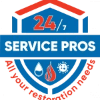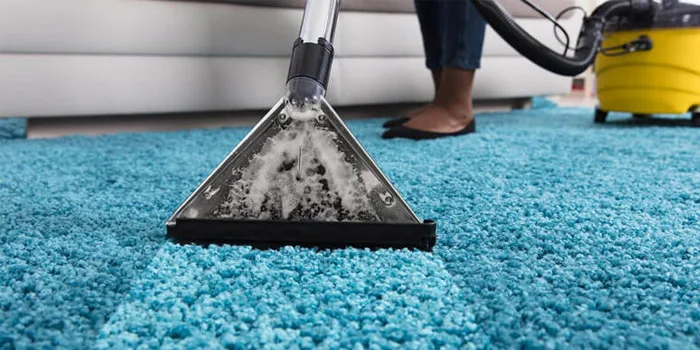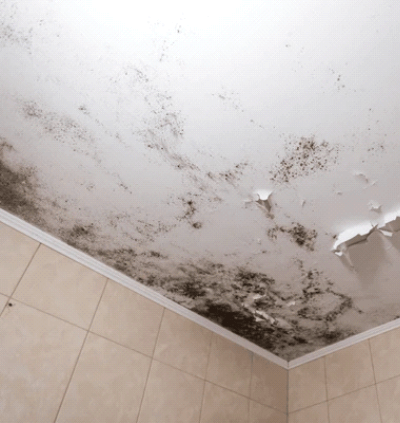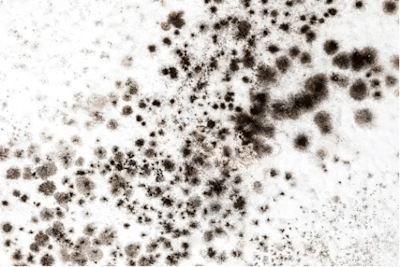Yes, air purifiers can be helpful in reducing mold spores in the air. Air purifiers equipped with HEPA (High-Efficiency Particulate Air) filters can capture mold spores, preventing them from circulating in the air and potentially causing respiratory issues or triggering allergies.
Let’s embark on a journey to unravel the intricacies of mold, its effects on health, and the critical role air purifiers play in mitigating its impact.
What Is Mold?
Mold belongs to the fungi kingdom, a diverse group of organisms that thrive in various environments. When it comes to indoor spaces, mold is often an unwelcome guest that can cause respiratory problems, fatigue and headaches. Here’s what you need to know:
- Microscopic Spores: Mold reproduces through tiny spores that are lightweight and easily disperse through the air. These spores can travel far and wide, seeking refuge on surfaces where they can multiply into visible colonies.
- Common Indoor Molds: While there are thousands of mold species, a few common ones make themselves at home indoors:
- Aspergillus: Often found lurking in damp bathrooms or near leaky pipes.
- Penicillium: Is familiar to us as the greenish-blue mold that occasionally graces forgotten food items.
- Cladosporium: A resilient mold that can grow at various temperatures, posing a threat to those with asthma or allergies.
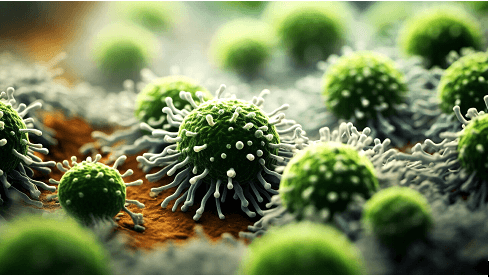
How Air Purifiers Work Against Mold
In our pursuit of understanding the intricate interplay between mold and air purifiers, let us delve into the mechanisms that render these air purifiers formidable allies in the ongoing battle against mold.
With a formal tone and meticulous attention to detail, we explore filtration mechanisms, air exchange rates, and strategic placement.
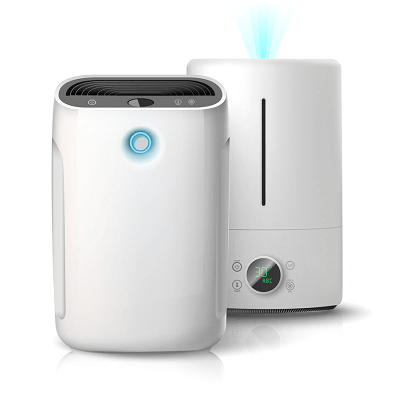
Filtration Mechanism: The Heart of Air Purifiers
- True HEPA Filters: True High-Efficiency Particulate Air (HEPA) filters stand as stalwarts in the realm of air purification. Their remarkable efficiency lies in capturing particles as minuscule as 0.3 microns with an impressive 99.97% success rate. Mold spores, being well within this size range, find themselves ensnared by these filters.
- Filter Maintenance: Picture a filter laboring under the weight of accumulated particles. A clogged filter hampers efficiency, rendering it ineffective. Regular filter replacement is non-negotiable for optimal performance.
- Activated Carbon Filters: Mold doesn’t arrive alone; it brings its unmistakable musty odor. Activated carbon filters step up to the challenge, adsorbing these odors with finesse. They emerge as the olfactory carriers of the air purification world.
Air Exchange Rate (ACH)
Higher ACH: Frequent air exchanges translate to fewer lingering mold spores. Aim for at least 4-6 ACH in areas where mold thrives (think bathrooms, basements, and forgotten nooks).
Room Size and Placement: The Strategic Chess Moves
- Appropriate Sizing: Selecting an air purifier is just like finding the right shoe size—too large, and you stumble over excess energy consumption; too small, and you falter in inefficiency. Match the purifier to your room size for a snug fit.
- Strategic Placement: Envision your air purifier as a mold-seeking missile. Position it near mold-prone areas—the bathroom, the basement, or that enigmatic closet where old shoes retire. Ensure unobstructed airflow, allowing the purifier to execute its mission.
Monitoring the Effectiveness of Air Purifiers Against Mold
As we continue our exploration of the symbiotic relationship between air purifiers and mold, let’s turn our attention to monitoring. In this section, we delve into quantifying mold reduction and assessing allergen relief—essential steps in evaluating the efficacy of air purifiers.
Quantifying Mold Reduction
- Particle Count Measurements:
- Before and After: Imagine a mold spore census. Before introducing the air purifier, take particle count measurements using a specialized device—a particle counter. Record baseline spore levels.
- After Air Purification: Now, unleash the air purifier. Capture post-purification readings. The difference between the two tells the tale of mold spore reduction.
- Target Levels: Aim for a significant reduction. Ideally, mold spore levels should plummet below 100,000 particles per cubic foot. This numerical threshold ensures a healthier indoor environment.
Allergen Relief: A Personal Barometer
Your body becomes the litmus test. Monitor allergy symptoms closely. If they want—fewer sneezes, less itching, and clearer sinuses—the air purifier is likely pulling its weight.
Remember, meticulous monitoring ensures that your air purifier remains a vigilant sentinel against airborne mold spores. Keep your particle counter handy, observe your body’s cues, and let the data guide you toward cleaner, fresher air!
Limitations and Considerations When Using Air Purifiers for Mold Prevention
As we tread the path of mold prevention, it’s essential to recognize the boundaries and strategic nuances when employing air purifiers. These devices, while potent, have their limitations.
The Scope of Air Purifiers: From Surface Mold to Airborne Spores
Surface Mold: The Limitations of Air Purifiers
Air purifiers are diligent guardians of air quality, but their domain does not extend to surfaces. They can’t scrub surfaces or climb walls to eliminate mold colonies. According to a study by the Environmental Protection Agency (EPA), regular cleaning and targeted remediation are key to controlling surface mold.
A Comprehensive Approach
Envision a coordinated effort—a strategy of mold prevention. While air purifiers play their part in the air, surface mold calls for a different strategy. Effective cleaning agents, elbow grease, and perhaps a bit of determination become the tools of choice. Research suggests that a combination of air purification and regular cleaning can reduce indoor mold levels by up to 80%.
Tackling the Root Cause: The Role of Humidity Control
Humidity: The Lifeline of Mold
Mold thrives in damp environments, where humidity levels are hospitable. To counter its growth, address the root cause—humidity. While air purifiers play a complementary role, controlling indoor humidity levels is of paramount importance. A study published in the Journal of Allergy and Clinical Immunology found that maintaining indoor humidity levels below 50% can significantly reduce mold growth.
Relative Humidity (RH): The Ideal Indoor Climate
Strive for an indoor RH below 60%. If necessary, invest in dehumidifiers. By keeping humidity in check, you create an environment that is inhospitable for mold growth. According to the World Health Organization, maintaining an indoor relative humidity of 40-60% can help prevent mold and other microbial growth.
In our pursuit of cleaner, fresher air, let’s remember that air purifiers are most effective when integrated into a comprehensive mold prevention strategy. They are not a standalone solution but a significant component of a holistic approach to maintaining a healthy indoor environment. A study in the Journal of Environmental and Public Health found that the use of air purifiers reduced airborne mold levels by 80% in homes with a history of mold problems. Thus, understanding mold and its effects on health, coupled with the strategic use of air purifiers, can help us create safer and healthier indoor environments.
Choosing the Right Air Purifier
In the battle against mold, choosing the right air purifier is a strategic decision. Let’s delve deeper into our top picks, each with its unique mold-fighting capabilities:
| Air Purifier | Key Features | Room Size | Noise Level |
|---|---|---|---|
| Dyson Pure Cool TP04 | HEPA filtration, Activated carbon, Real-time monitoring | Large | Medium |
| Blueair Blue Pure 211+ | Large room coverage, True HEPA filter | Large | Low |
| Winix 5500-2 | HEPA and AOC Carbon, Smart sensors | Medium | Medium |
| Levoit LV-H132 | Compact, Precision slinging | Small | Low |
Conclusion
In conclusion, mold, a common but often overlooked inhabitant of our indoor spaces.
However, the use of air purifiers, especially those equipped with True HEPA and activated carbon filters, can effectively mitigate the impact of mold. These devices capture mold spores as small as 0.3 microns with a 99.97% success rate and adsorb the musty odors associated with mold. Their effectiveness is contingent upon regular maintenance, appropriate sizing, strategic placement, and a high air exchange rate.
They are not a standalone solution but a significant component of a comprehensive approach to maintaining a healthy indoor environment.
In cases where the mold problem is significant or poses potential health risks, it’s advisable to contact 24/7 Service Pros for professional mold removal services.
Which Areas We Serve in South Florida?
- Hollywood
- Davie
- Miami Beach
- Weston
- Hallandale Beach
- North Miami Beach
- Sunrise
- Tamarac
- Coconut Creek
- Fort Lauderdale
- Miami
- Boca Raton
- Hialeah
- Coconut Creek
- Margate
- Pembrock Pines
- Dania Beach
- Lauderhill
- Delray Beach
- Pompano Beach
- Deerfield Beach
- Coral Springs
- Plantation
- Doral
- Aventura
- Miramar
- Sunny Isles Beach
- Hollywood
- Davie
- Miami Beach
- Weston
- Hallandale Beach
- North Miami Beach
- Sunrise
- Tamarac
- Coconut Creek
- Fort Lauderdale
- Miami
- Boca Raton
- Hialeah
- Margate
- Pembrock Pines
- Dania Beach
- Lauderhill
- Delray Beach
- Pompano Beach
- Deerfield Beach
- Coral Springs
- Plantation
- Doral
- Aventura
- Miramar
- Sunny Isles Beach
